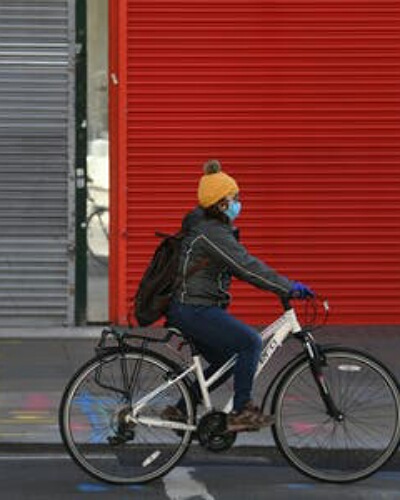What is the exit strategy for the current coronavirus lockdown?
- Coronavirus pandemic has impacted the world and has done things that hitherto were unforeseen.
- There has been a global lockdown and nations have sealed their borders.
They did so because the spread and fatality due to coronavirus were so overwhelming that it would have exceeded the capacity of the countries to deal with it in terms of manpower, infrastructure, and equipments. The lockdown seems to have worked but after the lockdown what happens?
After the lockdown what is the exit strategy?
The scientific world and governments are finding their best to curtail the spread of the deadly virus. But after this, what comes next? Is there any strategy in place on it? The answer is unclear.
Epidemiologist Marc Lipsitch, Harvard T.H. Chan School of Public Health (HSPH) rightly said:
“We’ve managed to get to the life raft,”
“But I’m really unclear how we will get to the shore.”

Governments have to think of the health as well as the freedom of their citizens and also tackle the economic slowdown. There are a number of questions that remain have no answers yet.
Caroline Buckee, an epidemiologist at HSPH said:
“How to relax the lockdown is not something around which there is a scientific consensus,”
Easing the lockdown will end as, a trial and error, most researchers agree. Megan Coffee, an infectious disease researcher at New York University opined:
“It’s going to have to be something that we’re going to have to take baby steps with,”
The effective reproduction number, or R, in Epidemiology
Epidemiologists are looking at determining the effective reproduction number, or R. It means the number of people an average infected person infects in turn.
If this is less than 1, it is good and the pandemic is shrinking. But if R is above 1, it implies the infection is growing. So R has to come below 1 for the lockdown to be lifted.
Gabriel Leung, a modeler at the University of Hong Kong says:
“To regulate R, Governments will have to realize that there are basically three control knobs on the dashboard,”

These knows are isolating patients and tracing their contacts, border restrictions, and social distancing.
The patient isolation control knob
Singapore, Hong Kong, and South Korea have managed to control the pandemic on their soil by just the first control knob. They are quick to pick up the cases, immediately isolate them, trace their contacts and quarantine them as well.
Hence these countries have implemented only a partial lockdown. The whole process requires money, testing kits, determined staff, and could be labor-intensive.
Mobile phone apps to immediately alert contacts of a case could help. But Western World has not yet implemented these systems.

Germany, France, and other countries are developing apps that use short-range Bluetooth signals to gauge the proximity between two devices without disturbing the privacy agreements.
But how to ensure that all citizens have these apps downloaded on their mobiles. Besides what exactly is a contact? A person in self-isolation in an apartment would end up getting unnecessary false notifications per day!!!
The border restrictions control knob
This knob most of the countries are using. They are also quarantining returning citizens.

As regards foreign travelers, Alessandro Vespignani, a disease modeler at Northeastern University says:
“As soon as you reopen to travelers, that could be something that the contact tracing system is not able to cope with,”
The social distancing control knob or lockdown knob
In this, there is an intracountry lockdown, and businesses and other activities are closed. The earlier this knob is relaxed, the better it is for the economy of a country.
Austria took the lead in Europe to give permission for small shops to reopen on 14 April. On -1 May, more shops and malls will reopen and restaurants would follow suit but later. It is difficult to choose an effective and prudent path since no proper experiments exist in this direction.
Megan says:
“Because we don’t have really strong evidence. it’s quite hard to make evidence-based policy decisions about how to go back.”

But Marc Lipsitch states:
“I think there’s going to be a lot of experimentation, not on purpose, but because of politics and local situations. Hopefully the world will learn from that.”
Michael Osterholm, director of the Center for Infectious Disease Research and Policy at the University of Minnesota, Twin Cities feels:
“If we get 30% or 40% of the population immune, that really starts to change that whole picture, it helps us a lot,”
As regards an exit strategy, Jeremy Farrar, head of the Wellcome Trust says:
“Science is the exit strategy,”
Ultimately science will have an answer in the form of an effective drug for the severely ill or a preventive drug or a vaccine.
Source: Science





